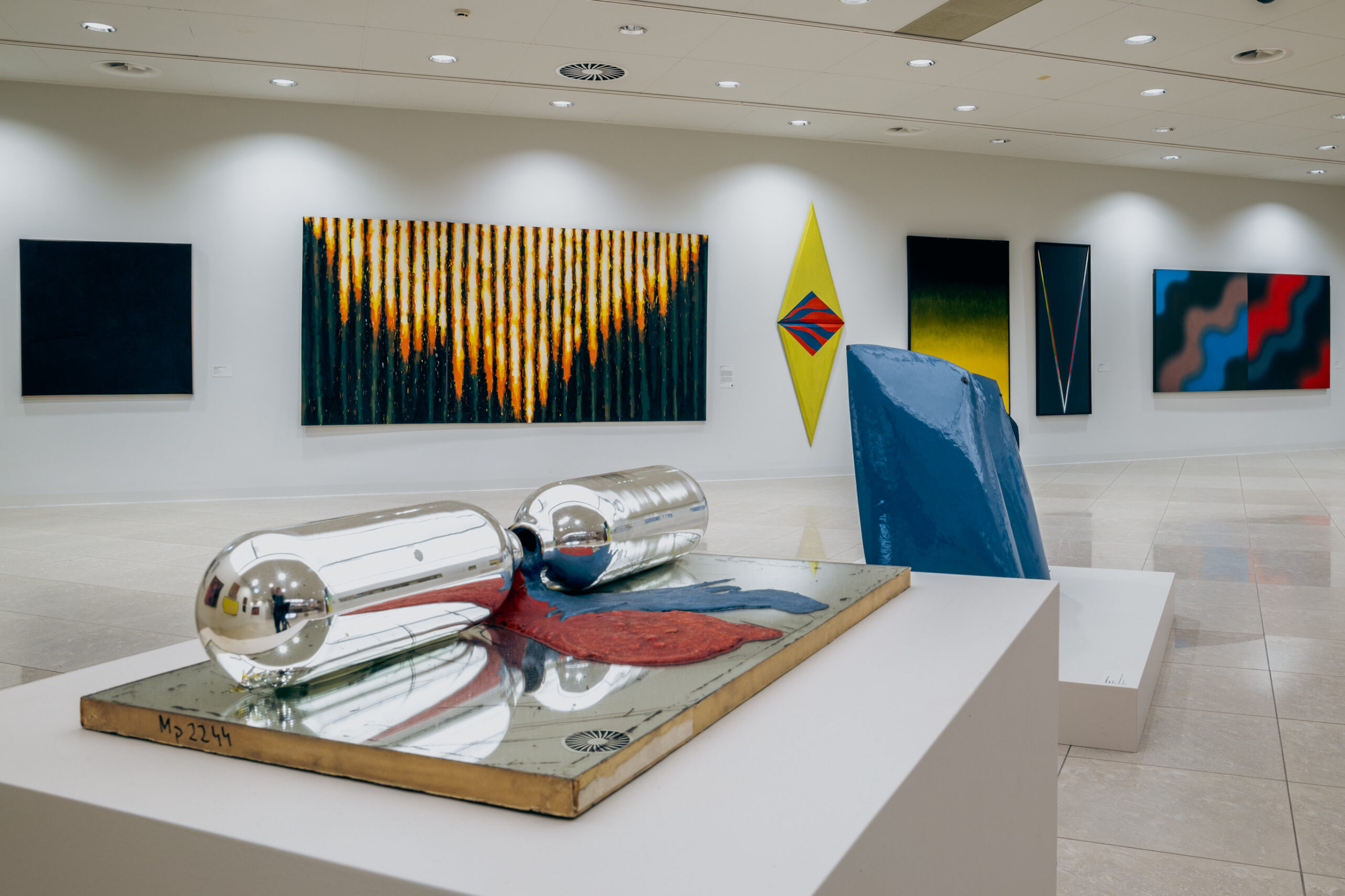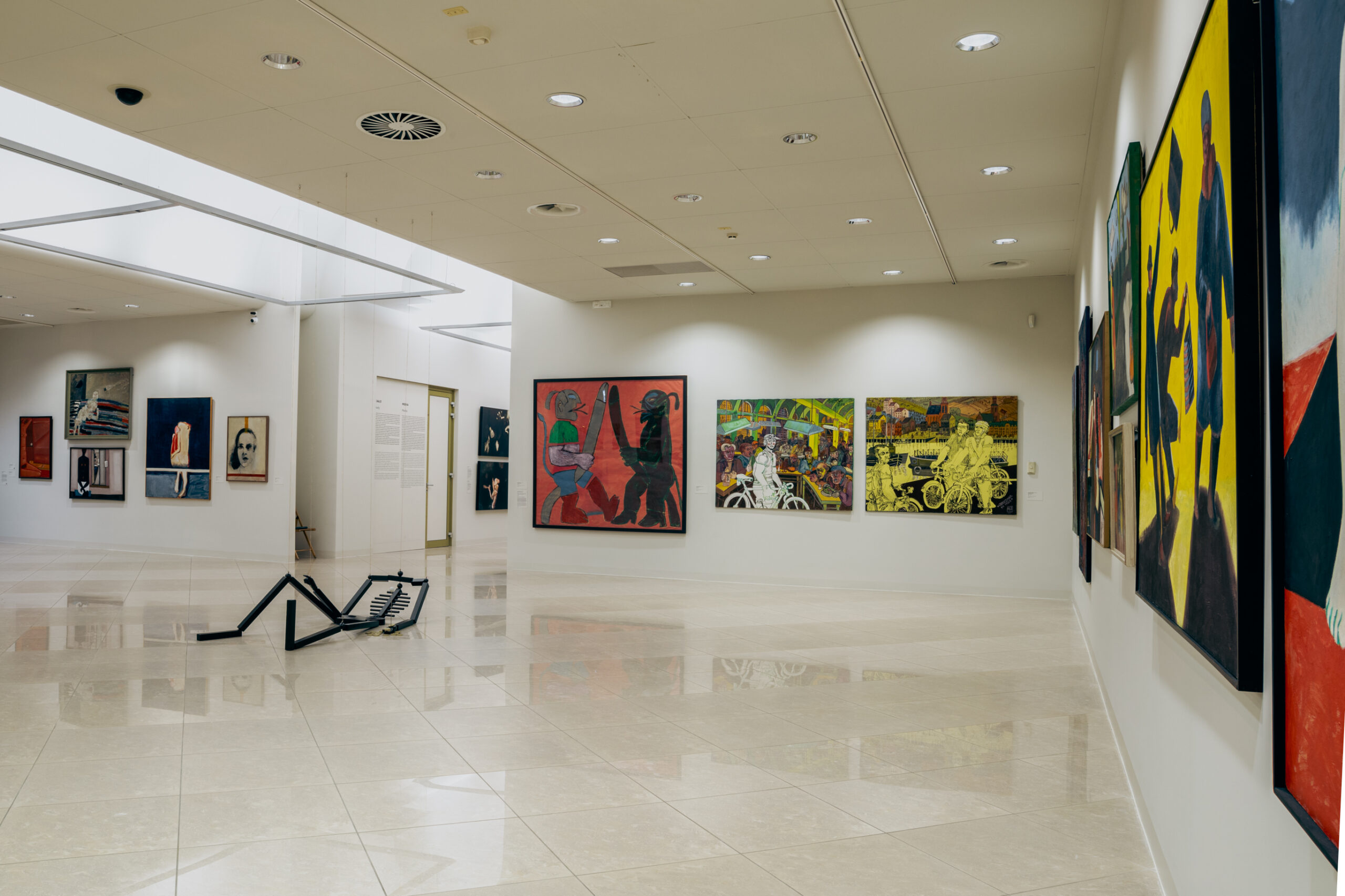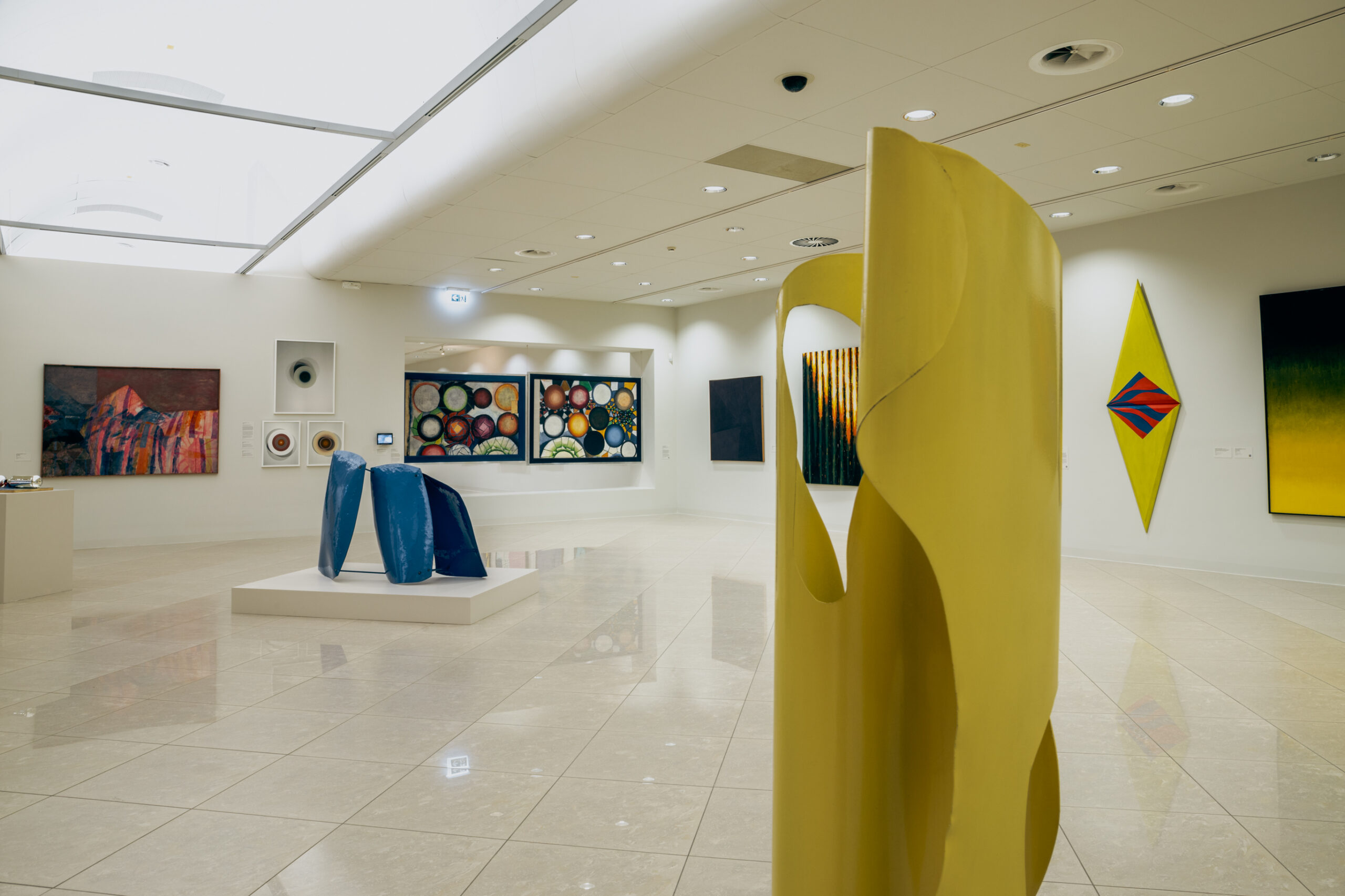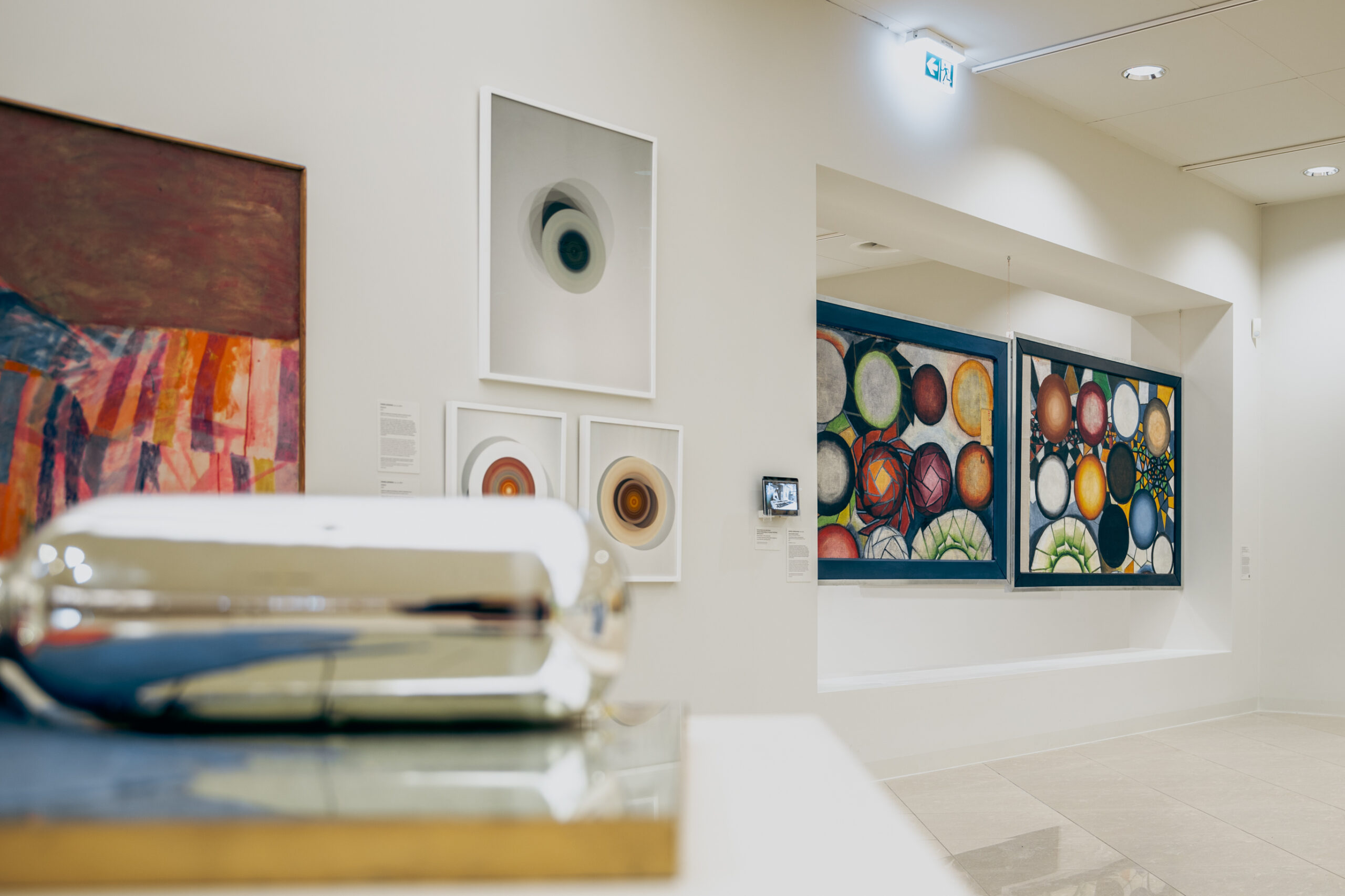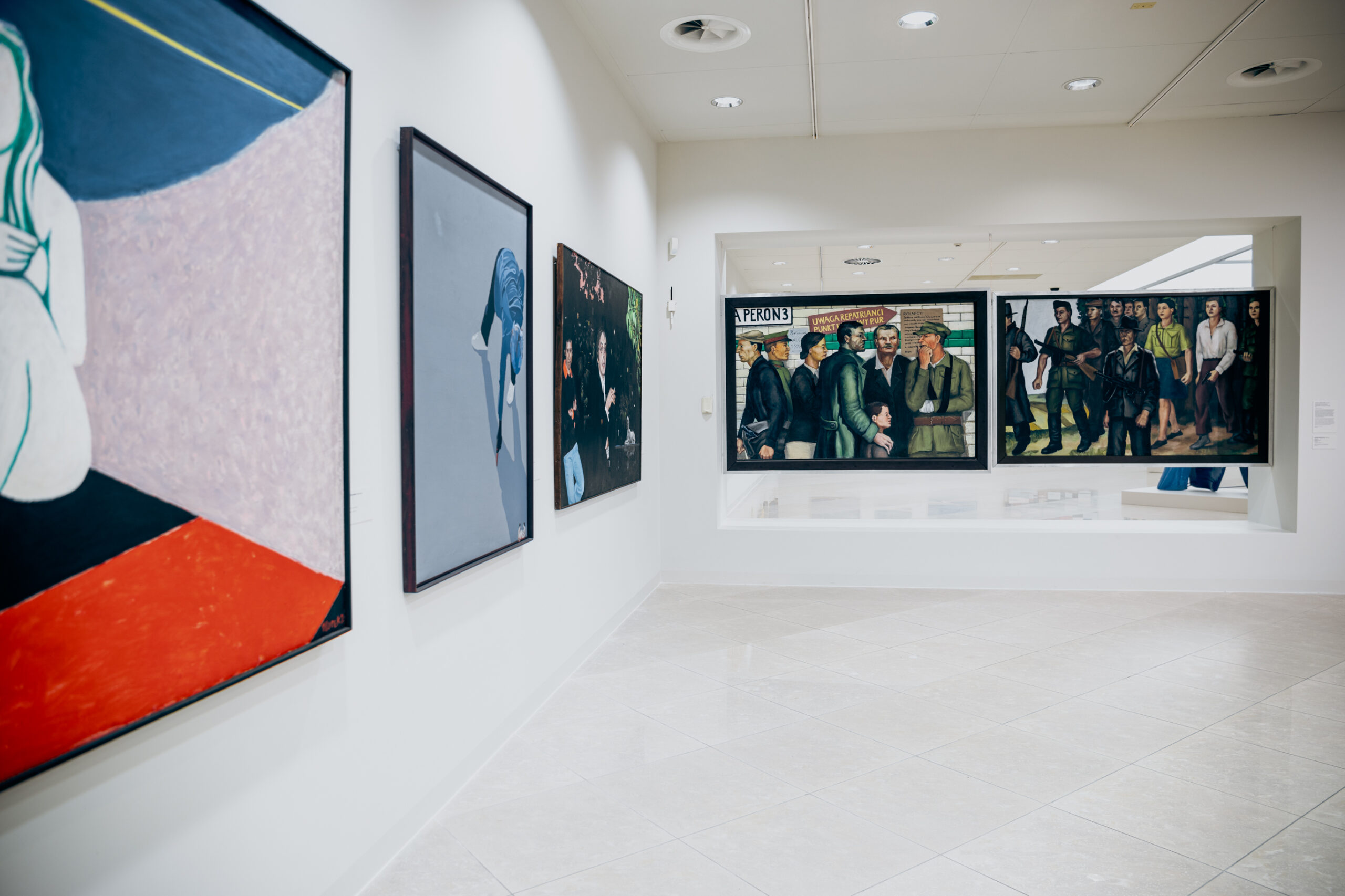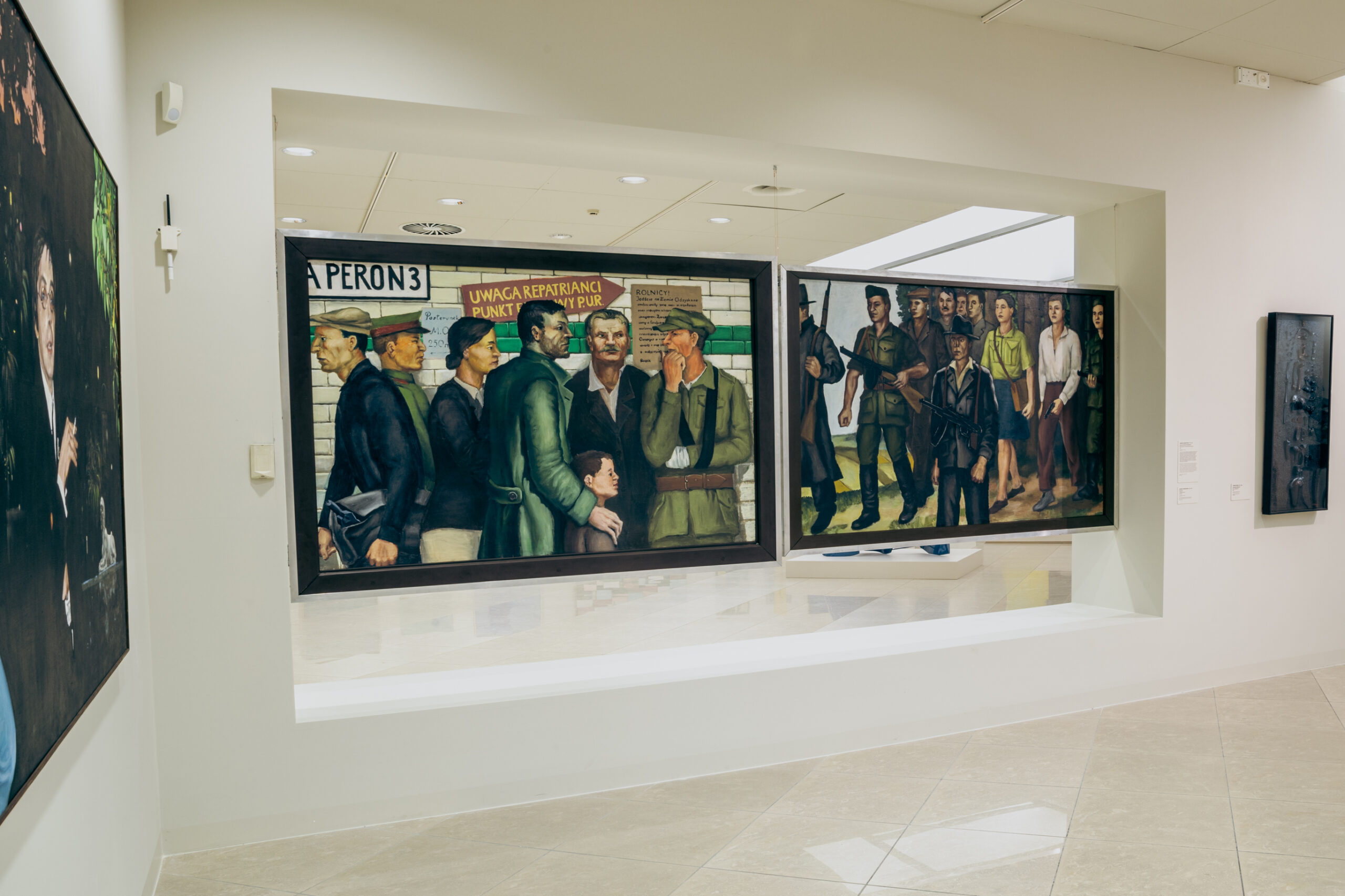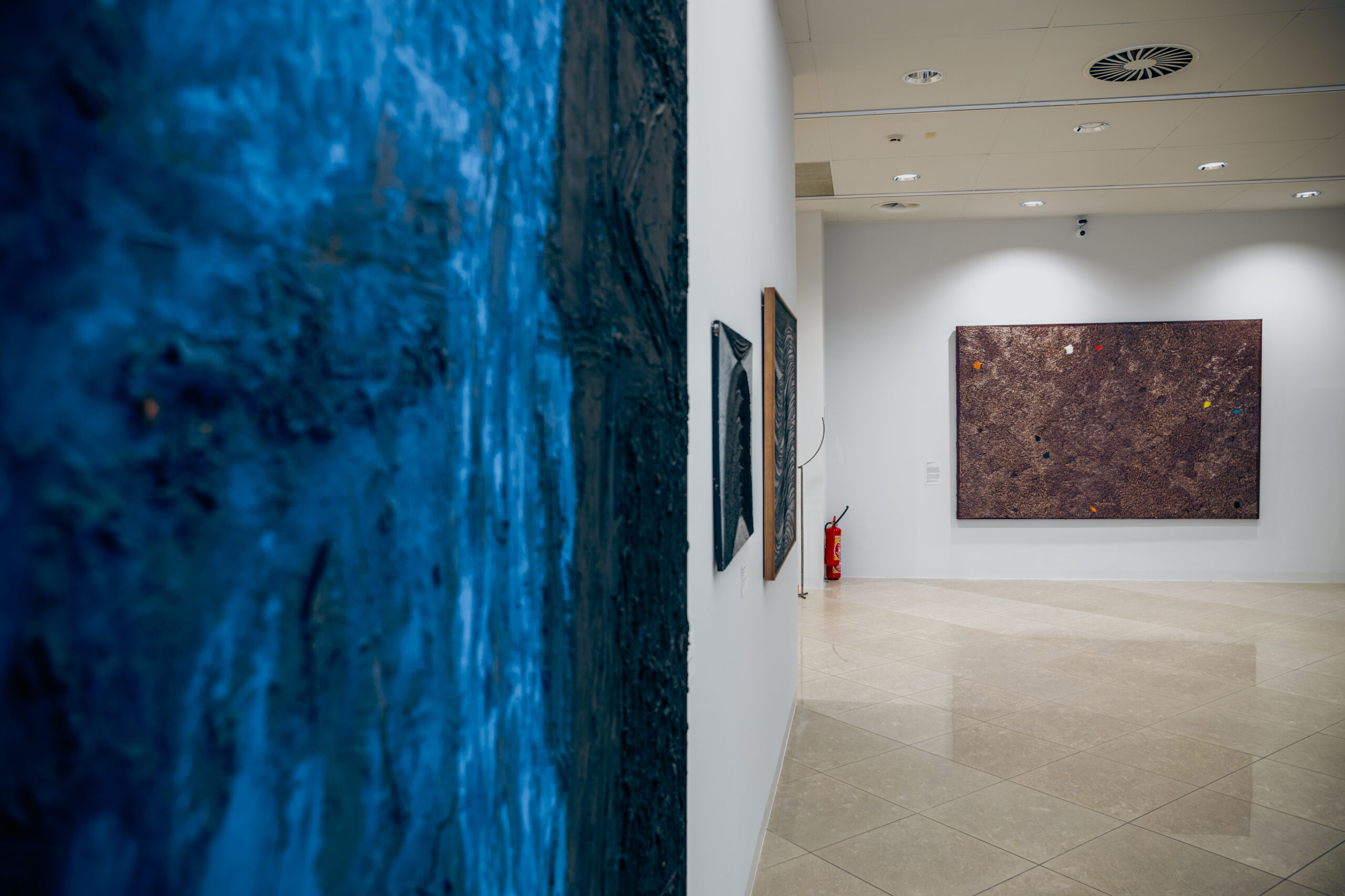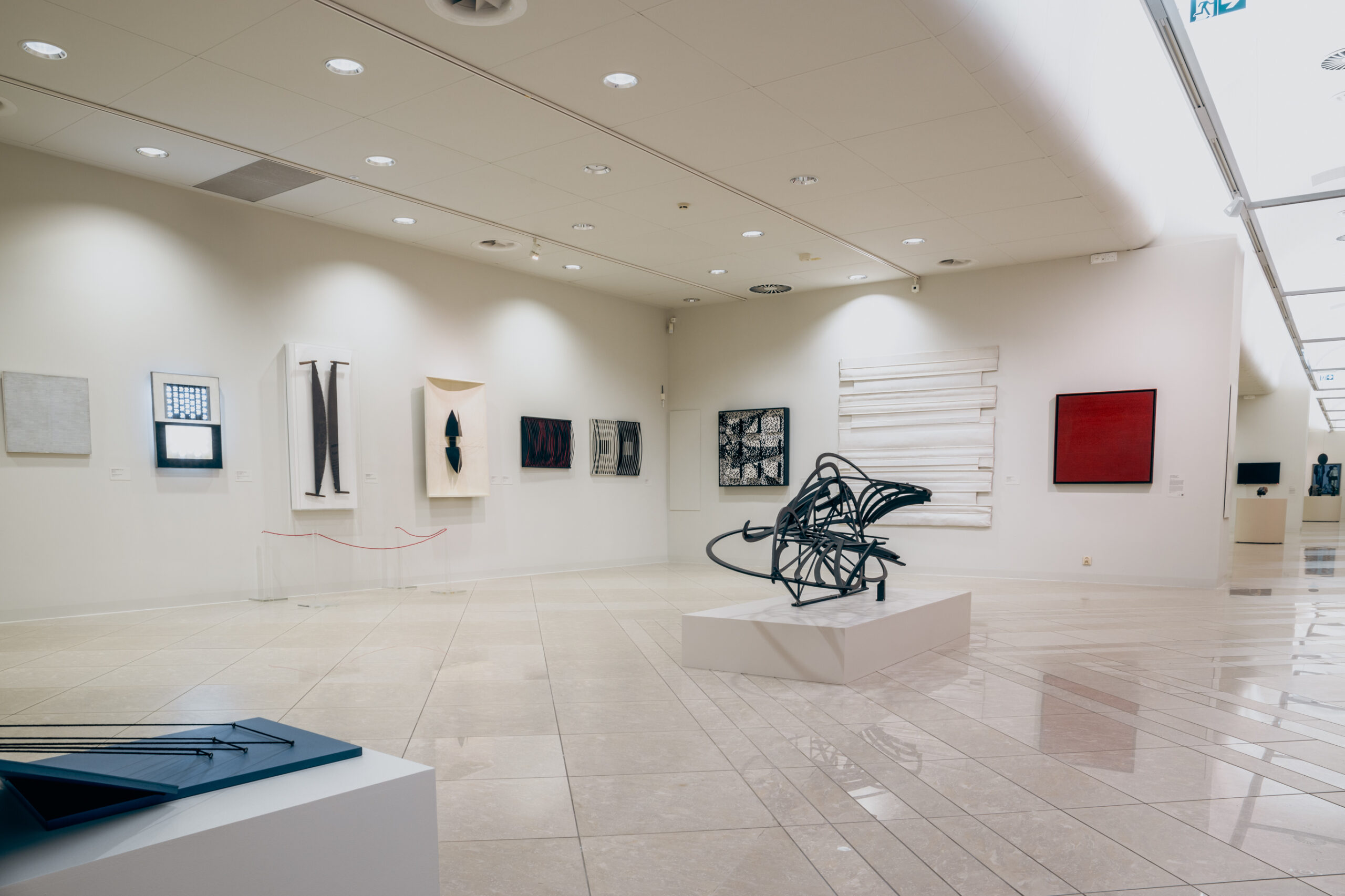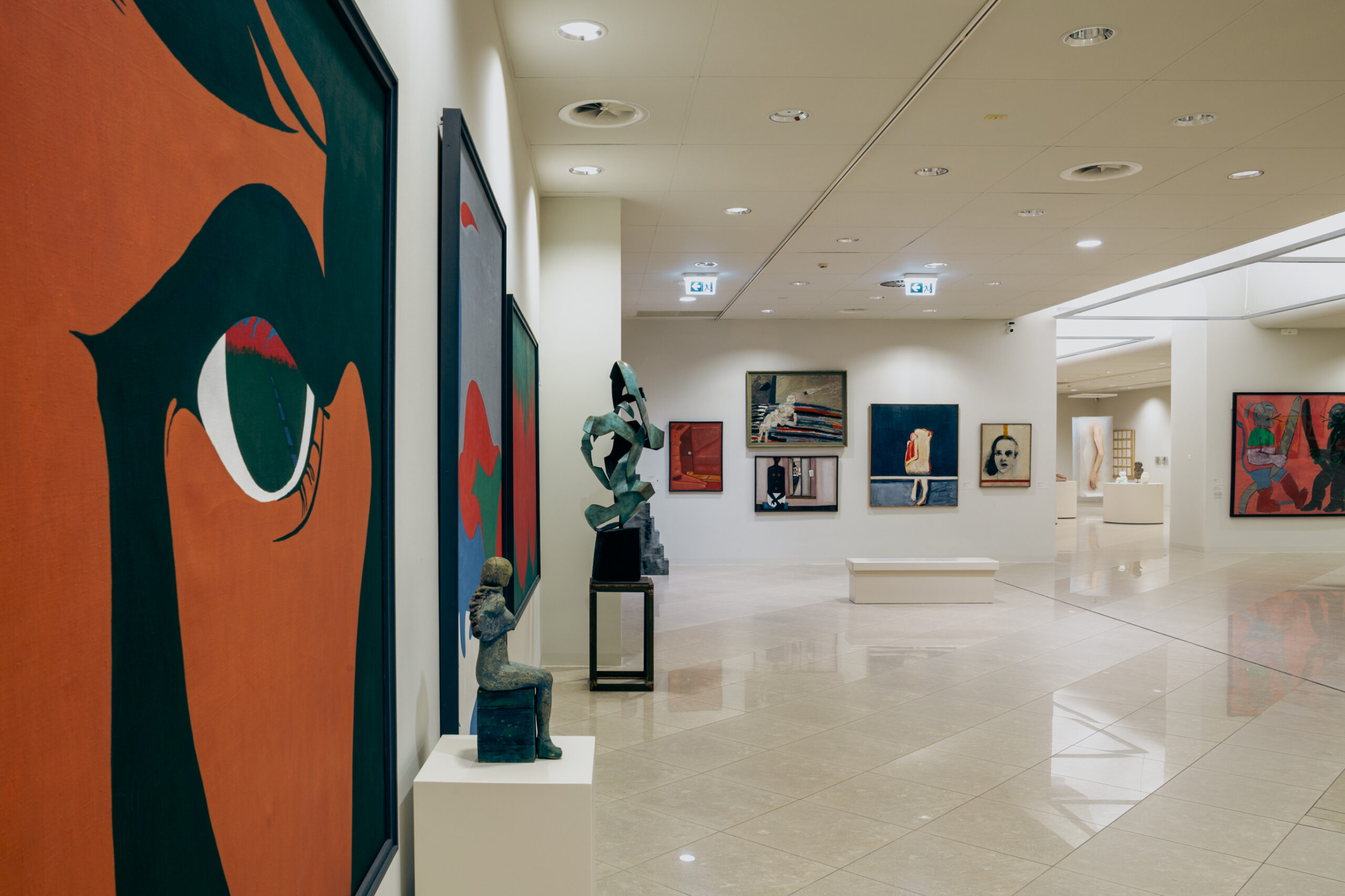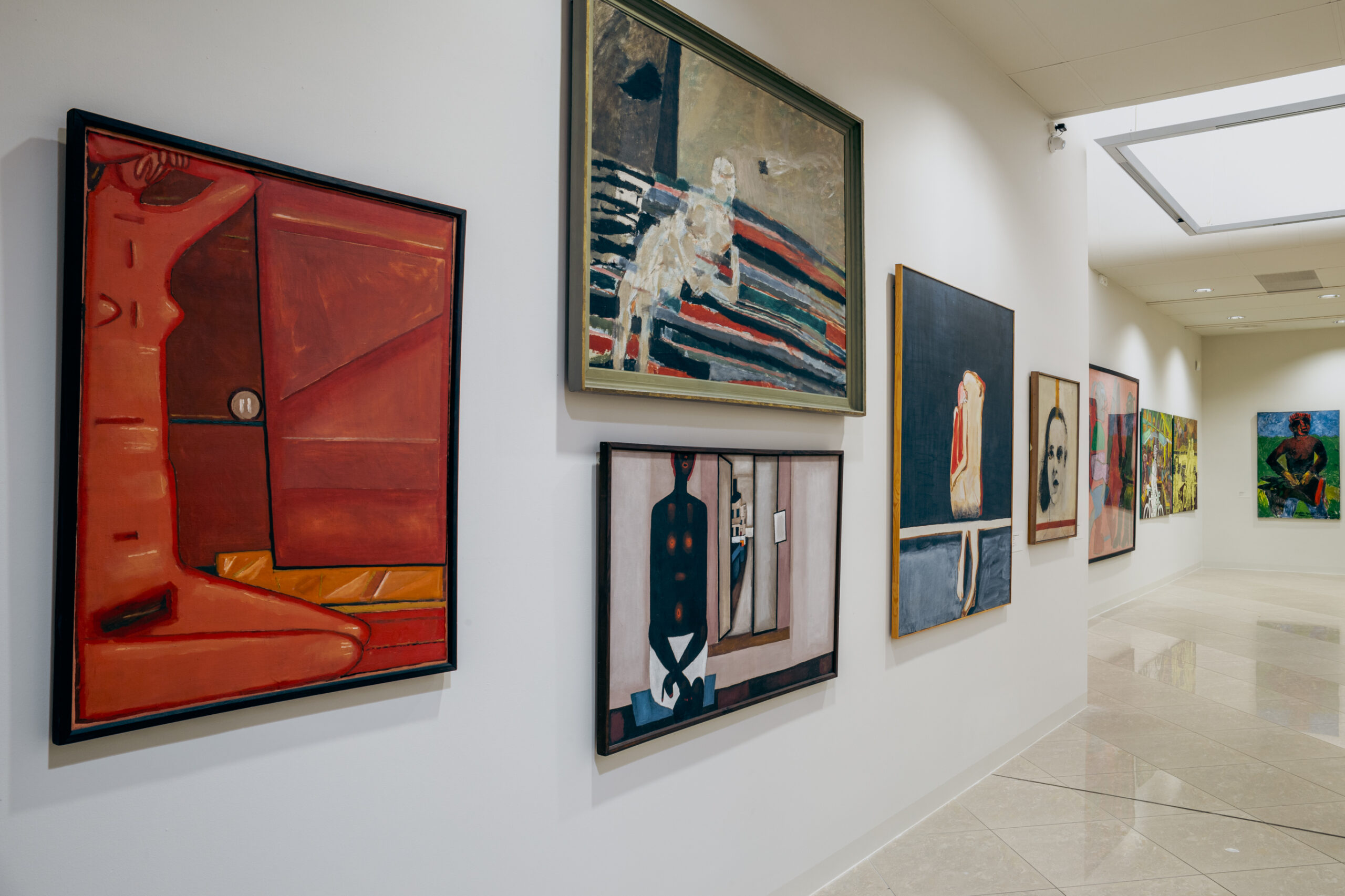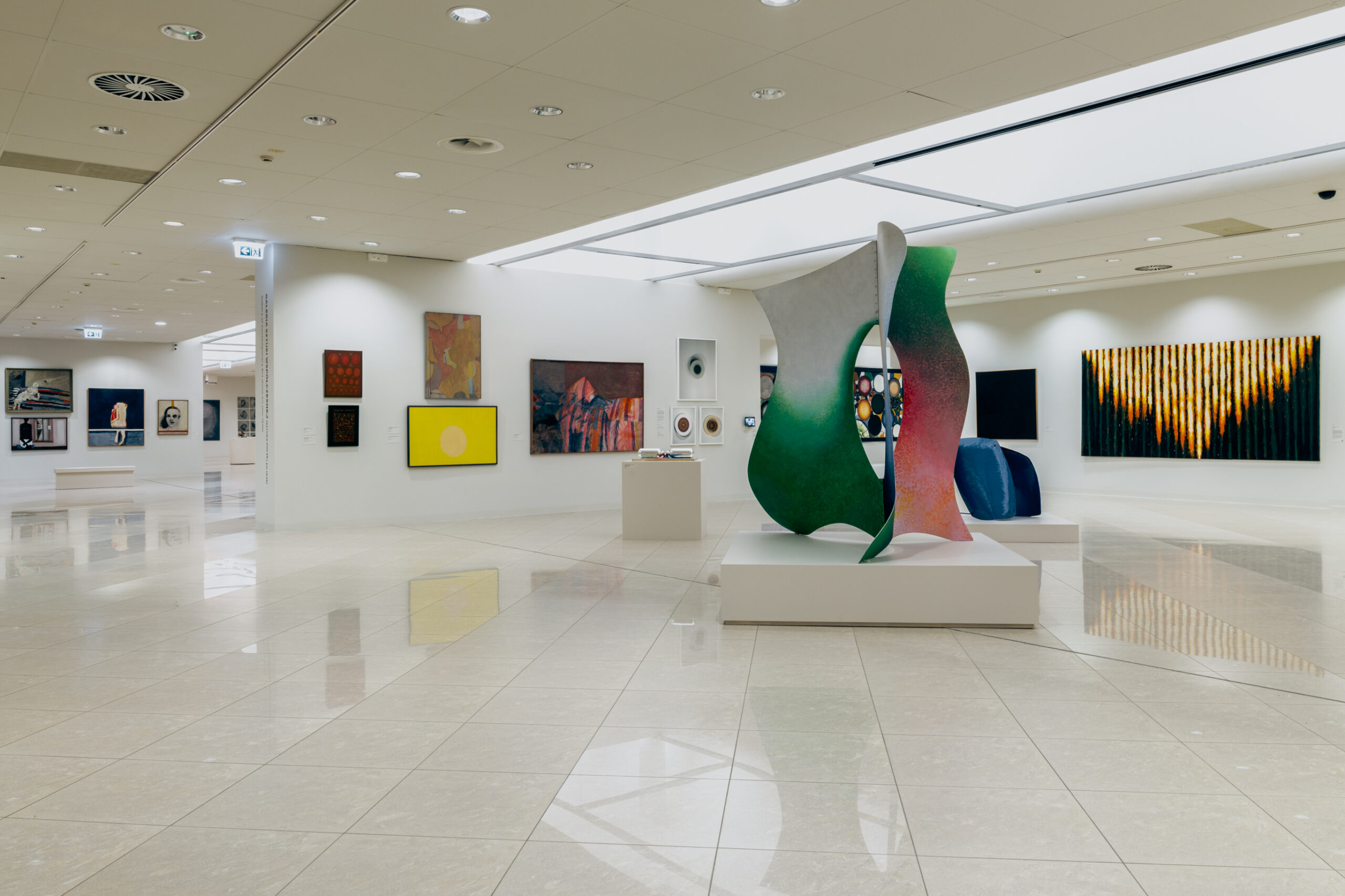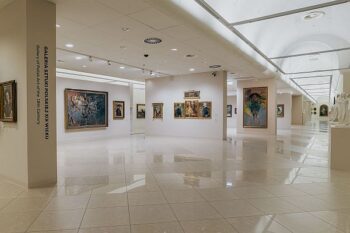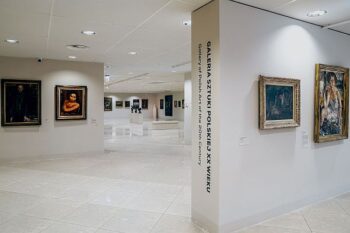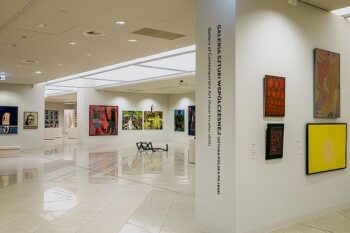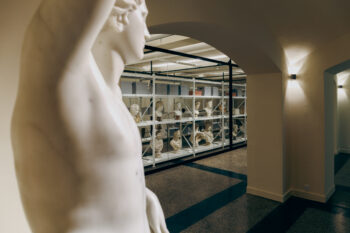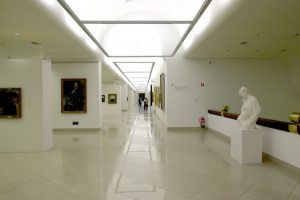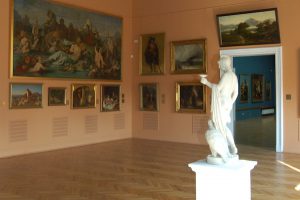Gallery of Contemporary Art (Polish Art after 1945)
Located on the 2nd floor, the Contemporary Art Gallery has a theme-based, non-chronological layout. For this reason, works by the same artists are dispersed in different areas on this floor. The exhibit is divided into sections addressing selected issues of contemporary art. Each section is composed of paintings, sculptures, installations, photographs, and videos from different periods, representing various environments. These compilations are designed to highlight the artists’ cross-generational fascinations and deepen the insights into the artistic phenomena of the 20th and 21st centuries.
The thematic division of the exhibit is inspired by the Poznań art scene. The topics addressed in the right-hand and central part of the gallery, Colour, Fantasy, Texture, Form + Realism and Realism + Figure refer to the name of the Poznań group 4F+R; founded by Alfred Lenica, it was active after WW II. In turn, the sections Body, Media and Experiment on the left-hand side of the floor are dedicated to the Poznań artists connected with OdNowa Gallery (1960s, Andrzej Matuszewski), ON Gallery (1970s/1980s, Izabella Gustowska), and Akumulatory 2 Gallery (1970s, Jarosław Kozłowski).
The museum collection includes works by the prominent classics of Polish art of the 2nd half of the 20th c. (Tadeusz Kantor, Jerzy Nowosielski, Roman Opałka, Wojciech Fangor, Stefan Gierowski, Henryk Stażewski), and those by artists of the younger generations who enter into dialogue with them (Agnieszka Brzeżańska, Angelika Markul, Magdalena Starska, Wojciech Bąkowski, Małgorzata Szymankiewicz). In addition, the gallery curators intend to showcase the artists of significance for the local art scene (Piotr Potworowski, Jan Berdyszak, Andrzej Bereziański, Leszek Knaflewski). It is interesting to note the exhibit of Andrzej Wróblewski’s double-sided works.


